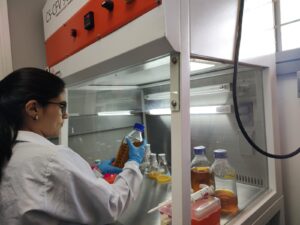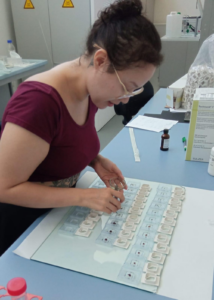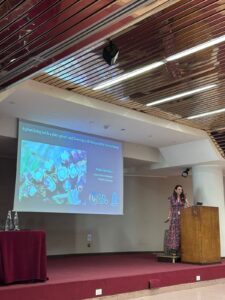Research activities of Veronica Beretta from the University of Milano (IT) are mainly focus on the gene
pathways that lead to inflorescence architecture determination, an important trait which
can determine crop yield improvement: indeed, inflorescence architecture can, for
example, determine how many fruits and seeds a plant can bear.
In this context, we focused our attention on three members of the ALOG gene family,
AtLSH1, AtLSH3 and AtLSH4 that, from previous studies, resulted to be differentially
expressed in the reproductive meristems of Arabidopsis. If AtLSH1, AtLSH3 and AtLSH4
are mutated at the same time, Arabidopsis plants can produce bracts that subtend each
flower. Bract organs are not present in wild type Arabidopsis plants.
Given the expression profile of these three genes, the observed mutant phenotype can
derive from a misspecification of the boundary region between the inflorescence meristem
and the flower meristem of Arabidopsis.
During her secondment at the New York Botanical Garden, she worked with Drs. Barbara
Ambrose to determine if orthologs of the ALOG genes of Arabidopsis in other plant
species maintain the same expression profile in the reproductive meristems. This can help
us to understand if the ALOGs can have a conserved function in the specification of the
boundary region.
With the help of Drs. Ambrose, she was able to identify interesting plant species that she learned
to analyze. Working at NYBG lab she learned how to proper embed in paraffin the
reproductive tissues of the selected plant species and to image them. She was also able to
identify sequences of the ALOG genes present in these plants in order to build a
phylogenetic three. As a result of this secondment, she can perform now probe design to perform in-situ hybridization on the
embedded material to study the expression profile of the ALOGs in these species.

Secondment of Andrea Ramirez-Ramirez from Universidad de Antioquia (COL) to the Plant Developmental Systems (NL) – June-August 2024
Andrea Ramirez-Ramirez (Universidad de Antioquia, CO) spent 2 months at the Plant Developmental Systems department in Wageningen University

